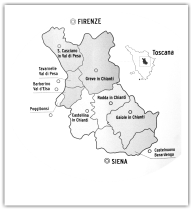written by Michael Schmelzer, Monte Bernardi - Panzano in Chianti, previously published on jancisrobinson.com on Aug. 13, 2014
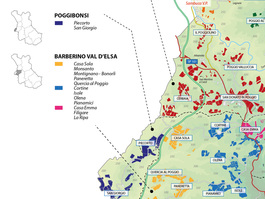
When it first became official that the required majority of the producers of the Chianti Classico Consorzio had approved the creation of a new top tier category, Gran Selezione, alarm bells rang in the minds of many small producers. Our hope was for better understanding and promotion of Chianti Classico via clearer, more meaningful labelling that would focus on territorial differences, and not another tier that serves larger, market-dominating estates wishing to bolster their marketing arsenal with this shortsighted strategy.
Producers who grow and bottle their own estate fruit (designated as integralmente prodotto) and source from only one commune or sub-commune have an inherently marketable feature, that of their unique zone. This 'new direction' and new top tier is not what this kind of producer needs, and nor does Chianti Classico as a whole, for that matter.
One of the most common frustrations for a travelling Chianti Classico producer is the widespread lack of understanding regarding two distinct wines: Chianti DOCG and Chianti Classico DOCG. The Consorzio recognises that clarifying this distinction is one of their biggest challenges. However, when confusion regarding the two neighboring and sometimes overlapping winemaking areas continues, the reality is that every promotion of Chianti Classico benefits the Chianti region as well, while the promotion of Chianti does not benefit Chianti Classico.
The Chianti Classico blog, managed by the Consorzio, which has done a very good educational job explaining all things Classico, has understandably devoted a large amount of their efforts over the last year to introducing and explaining the new Gran Selezione category. Since the introduction of Gran Selezione in June 2013, by my estimate the blog has committed 25% of their posts to material related to Gran Selezione. The creation of the Gran Selezione, quite simply, has created a new priority in education which does nothing to clarify the Chianti v Chianti Classico problem. How has this helped the Chianti Classico producers improve the understanding and reputation of the region?
We have our map, but where do we go now?
We have our map, but where do we go now? Indefatigable cartologist Alessandro Masnaghetti published a brand new map of the Chianti Classico region last month. See below for details of how to order one.
Producers who grow and bottle their own estate fruit (designated as integralmente prodotto) and source from only one commune or sub-commune have an inherently marketable feature, that of their unique zone. This 'new direction' and new top tier is not what this kind of producer needs, and nor does Chianti Classico as a whole, for that matter.
One of the most common frustrations for a travelling Chianti Classico producer is the widespread lack of understanding regarding two distinct wines: Chianti DOCG and Chianti Classico DOCG. The Consorzio recognises that clarifying this distinction is one of their biggest challenges. However, when confusion regarding the two neighboring and sometimes overlapping winemaking areas continues, the reality is that every promotion of Chianti Classico benefits the Chianti region as well, while the promotion of Chianti does not benefit Chianti Classico.
The Chianti Classico blog, managed by the Consorzio, which has done a very good educational job explaining all things Classico, has understandably devoted a large amount of their efforts over the last year to introducing and explaining the new Gran Selezione category. Since the introduction of Gran Selezione in June 2013, by my estimate the blog has committed 25% of their posts to material related to Gran Selezione. The creation of the Gran Selezione, quite simply, has created a new priority in education which does nothing to clarify the Chianti v Chianti Classico problem. How has this helped the Chianti Classico producers improve the understanding and reputation of the region?
We have our map, but where do we go now?
We have our map, but where do we go now? Indefatigable cartologist Alessandro Masnaghetti published a brand new map of the Chianti Classico region last month. See below for details of how to order one.
In the accompanying notes he rightfully points out, 'it is easy to understand that any attempt to give a coherent picture of the appellation, one which is clear and useful...[is] a very complicated construction, ready to fall apart or become a dead end when faced with the uncertainties lurking in the criteria which are adopted'.
Which criteria ought to be considered? To paraphrase Masnaghetti: we are considering an area with 7,000 hectares of vines extending over 70,000 hectares of land, with a thousand subtle shadings of soil, and incredibly diverse microclimates and altitudes. These criteria may allow for generic identification of a limited number of macro-zones, but these macro-zones cross over various communes and are therefore not easily understood as links to a specific territory.
The answer, at least for now, seems to be for fellow producers to organise their individual communes and sub-commune designations under their own respective unions as Panzano in Chianti has already done.
Which criteria ought to be considered? To paraphrase Masnaghetti: we are considering an area with 7,000 hectares of vines extending over 70,000 hectares of land, with a thousand subtle shadings of soil, and incredibly diverse microclimates and altitudes. These criteria may allow for generic identification of a limited number of macro-zones, but these macro-zones cross over various communes and are therefore not easily understood as links to a specific territory.
The answer, at least for now, seems to be for fellow producers to organise their individual communes and sub-commune designations under their own respective unions as Panzano in Chianti has already done.
The Union of Producers of Panzano (Unione Viticoltori di Panzano) have a logo, approved by the Consorzio of Chianti Classico, which will be placed on their back labels (see above). A single identifying logo for each commune/sub-commune designation would make it easier for the consumer to identify the specific origin of the wine from within Chianti Classico. It would be up to the producers of that particular designation to decide what would be permitted or not permitted in order to display the designation’s logo. In Panzano, for example, members may place the Unione’s logo on their back label only if the grapes are 100% farmed by said producer, from vineyards located within Panzano borders, and bottled in Panzano, so in other words integralmente prodotto. These seem like basic and logical requirements.
This solution works within the confines of the existing regulations and should be supported by the Consorzio and its members. Most importantly it should not be limited to a category within the regulations such as Riserva or Gran Selezione, as this sends a signal to the market that a Chianti Classico normale cannot be special or unique, and robs the smaller producers of their advantage. If the adoption of commune and sub-commune designations were to be supported by the Consorzio and allowed across all the categories, the controversy surrounding Gran Selezione would disappear as the smaller producers would feel their needs were met, and the larger producers would feel their needs were met. We would have a workable (road)map for the future of Chianti Classico.
Focusing on communes allow us to sidestep the conversation of Chianti v Chianti Classico by focusing on a territory-based township without creating something new out of thin air. As an Italian might emphatically declare, 'I am not Italian - I am Sicilian (or Friulano or Roman or Florentine…)'. Perhaps we ought to say, 'I am not a Chianti Classico producer, I am a Panzano producer.' Undoubtedly, we would not weaken the Chianti Classico DOCG by saying such a thing, as we are still Chianti Classico producers, but we should sound our own bells and let everyone know where our loyalties (and vineyards) lie.
Alessandro Masnaghetti undertook this painstaking task without any financial backing from the Consorzio. You can reward him for all his hard work, and obtain copies of this uniquely detailed map for €7 each, from his website.
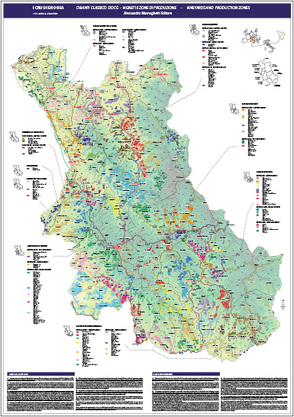
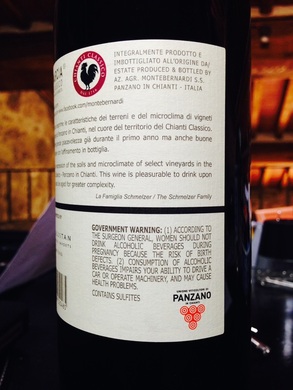
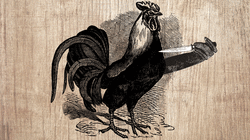

 RSS Feed
RSS Feed
